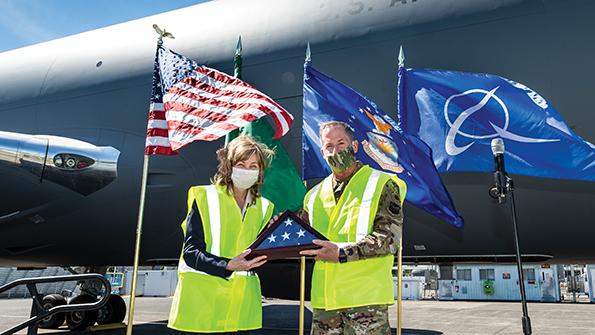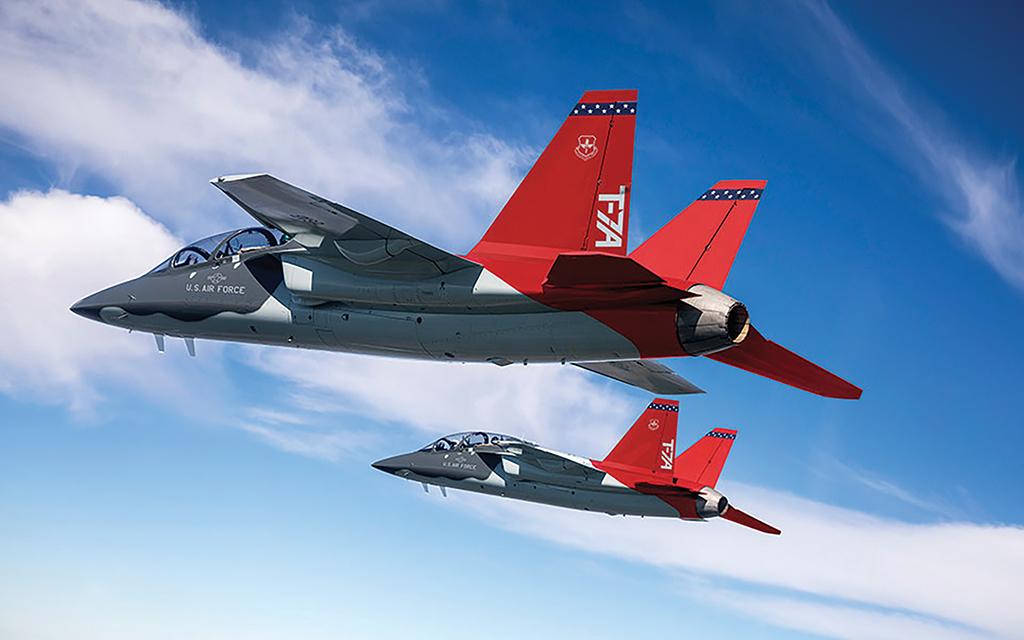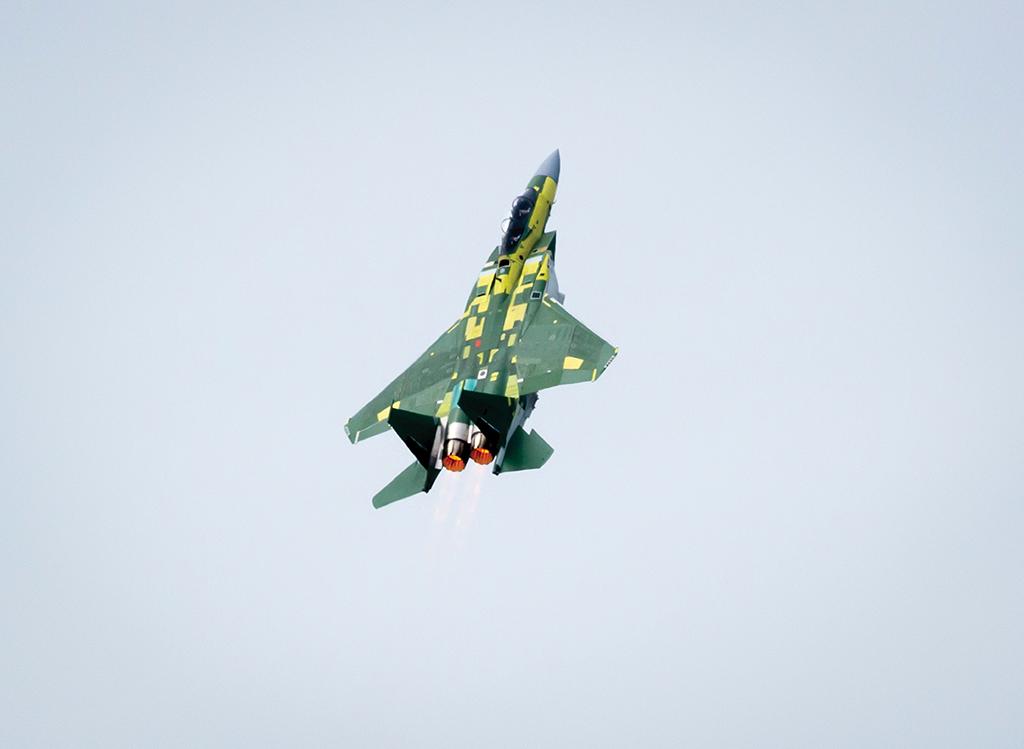Boeing Defense And Space’s Leanne Caret: ‘We’re Owning Our Mistakes’

Leanne Caret, president and CEO of Boeing Defense, Space and Security, spoke via teleconference with Aviation Week editors in the run-up to what would have been the Farnborough Airshow.
AW&ST: In addition to the turnover among Boeing executives, the company’s stock and reputation have taken a beating in the past year. How is Boeing a different company today than it was 18 months ago? I am confident in the Boeing Co., and we have an enormously bright future. It’s because of the incredible women and men who work for this company and bring their best every day. We have become a very introspective company, very pragmatic. We’re owning our mistakes, and we’re committing to address those. That is the centerpiece of what you have to do to have trust, especially in an industry as critically important as ours is, where people are flying and using our products every day, whether commercially or defending nations and allies.
How has COVID-19 affected the goals that Boeing Defense set at the start of the year? The defense industry has been deemed mission-essential. We need to make certain we’re continuing to deliver product to our customers, we keep our supply base healthy, and we all have an eye to the future. I really appreciate the partnership and conversations we’ve had with the Pentagon. You’ve heard [Boeing CEO/President] David Calhoun mention that, after what has happened in the commercial aerospace market, the defense business is important to the Boeing Co.—has been and always will be.
After COVID-19, what does the future hold for defense spending? We have a very pragmatic view of the future. I don’t anticipate significant budget increases. We have always planned that at some point we could see a regression in defense budgets.
Wall Street is expecting about a 2% increase in revenue for Boeing over the next couple of years. That is on the lower end of where your peers are. They are in the mid-single digits. What rate of growth do you see? I think it’s important to note where we are in the life cycle of many of the products in our portfolio. Where you will continue to see opportunity for us as we move into production on some of those key franchise programs that we won a few years ago is the [T-7 advanced trainer, MQ-25 unmanned carrier-based refueling aircraft and MH-139 helicopter].
We’re all going to see the marketplace adjust as a result of COVID-19. Around the world, we’ve already seen some delays and some very large competitions that have been slighted because customers are having to assess where they are. I want our team to have as its centerpiece meeting our customers’ needs and expectations, and I believe that the outcome of that will be growing the business and strong financial performance.
Many big programs are coming down the line, such as the Low-Cost Attritable Aircraft, the Advanced Battle Management System, the Next--Generation Air Dominance or the Future Vertical Lift programs. The Pentagon is emphasizing procurement with more control over intellectual property, fewer hooks into the sustainment phase and more competition. How will Boeing adapt to that over time? Will it require fundamental changes? In the last decade, we were focused on redefining how we designed and built aircraft. We were anticipating that the customer was going to commoditize the type of product that we have traditionally built. We have a foundation in model-based systems engineering to bring the collective best from industry together, so that when a system is in the field, we have developed it with maintainers in mind.

That’s where our build process has really paid off. In 2016, we had not won the T-7 or MQ-25 contracts or certainly not had any thought of the F-15EX yet. All three of those used this concept, which is to use advanced engineering and design toolsets to address the customer’s vision. We placed our bets on changing the way we did business, and we have positioned ourselves nicely.
Please update us on the KC-46. Where do things stand with the foreign object debris (FOD) situation? I’m not going to be happy until we’re perfect, and we’re not perfect yet. My focus is to make sure we don’t deliver any aircraft with FOD to the U.S. government. If that means I need to hold back a delivery because a member of our team identified an issue, we’re going to do the right thing. The most important thing is to deliver a perfect product to the customer. I think it is a testament to the steps that we have taken that we will not pass a defect to our customer. It speaks to the culture change that we have instituted over the last 1.5 years. Quite frankly, we have used KC-46 as the bully pulpit to redefine what we want to do as a company, and I’m really proud of the team for leading the way.
Is Boeing on track for fixing the KC-46’s remote vision system (RVS) in fiscal 2023? We are looking to demonstrate RVS 1.5 later this summer. It is a building block to what we call RVS 2.0. We have put in place a standard and an agreement that we are all aligned around, that really transcends what the original contract anticipated in terms of RVS. What we are incorporating posi-tions this fleet for not only a leap forward in technology but for autonomous operations in the future. We are on track in this partnership with the U.S. Air Force and the Air Force Research Laboratory. And yes, the timeline is in 2023.
What is the outlook for selling F-18s internationally, given the potential for pandemic-related budget reductions in the future? We’ve secured a number of orders with F-18s that have kept our production line hot. Coupled with that, we’re doing the service life modernization program with the U.S. Navy, where we’re bringing every one of the aircraft back through and increasing capabilities that eventually will include Block 3 capabilities. We have seen signs that campaigns in Canada, Finland, Germany, India and Switzerland are sliding a bit to the right. None of them have been, to my knowledge, canceled or stopped.

One of the things that we’ve seen them dealing with is the impact of COVID. Many times, they have the budget, but the budget may go out a longer period of time. Or right now they are impacted by staff shortages. These are some big opportunities, and I think the F-18 is positioned nicely, both from the aspects of an acquisition cost and the cost per flying hour.
What is the outlook for the F-15? We just did our F-15 Qatar flight a few weeks back. We have continued to demonstrate the ability of the F-15 with our Saudi and Qatari customers and the U.S. Air Force. We’re really excited about that opportunity, and it won’t be your grandma’s F-15.
Boeing is a bit late on delivering the Space Launch System (SLS), and it was left out of NASA’s competition to build a lunar lander. What are you doing to turn those programs around? On Space Launch Systems, I am really proud of the team for the amazing capabilities they developed with the world’s largest rocket. She’s sitting on the stand at Stennis Space Center. After watching how this team has battled through the COVID crisis, I’m looking forward to having a hot-fire [test] later this year. Early on, we struggled on SLS from an execution phase. There were also different challenges from a funding perspective and other things. Over the course of the last 1.5-2 years, the team has been hitting its milestones and commitments.
On the civil space side, SpaceX beat Boeing to the punch on the first Commercial Crew mission. Are you looking to change your approach? On Starliner, we did not execute the full mission profile, and the right thing to do is to refly. I think that’s the right decision, and the teams are focused on that. Our partnership with NASA dates back more than 60 years, and we’re incredibly proud of this heritage. But our future isn’t defined by our past. It’s about making certain that we can continue to innovate and deliver today. This year marks 20 years for the International Space Station.
I just couldn’t be more thrilled for the team as Doug [Hurley] and Bob [Behnken] were able to join the other astronauts aboard this station. Human space exploration is not for the faint of heart. It changes mankind. We are going to continue to be a great partner, and we’re going to continue to advocate for everyone’s success when it comes to human space exploration—because it is that important for all of us.









Comments